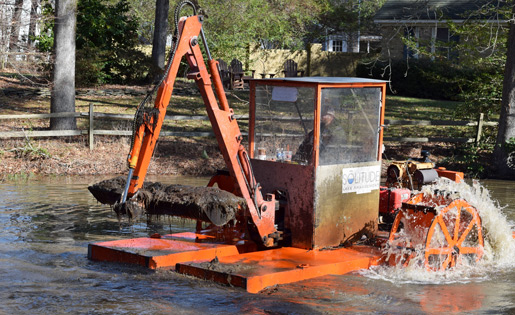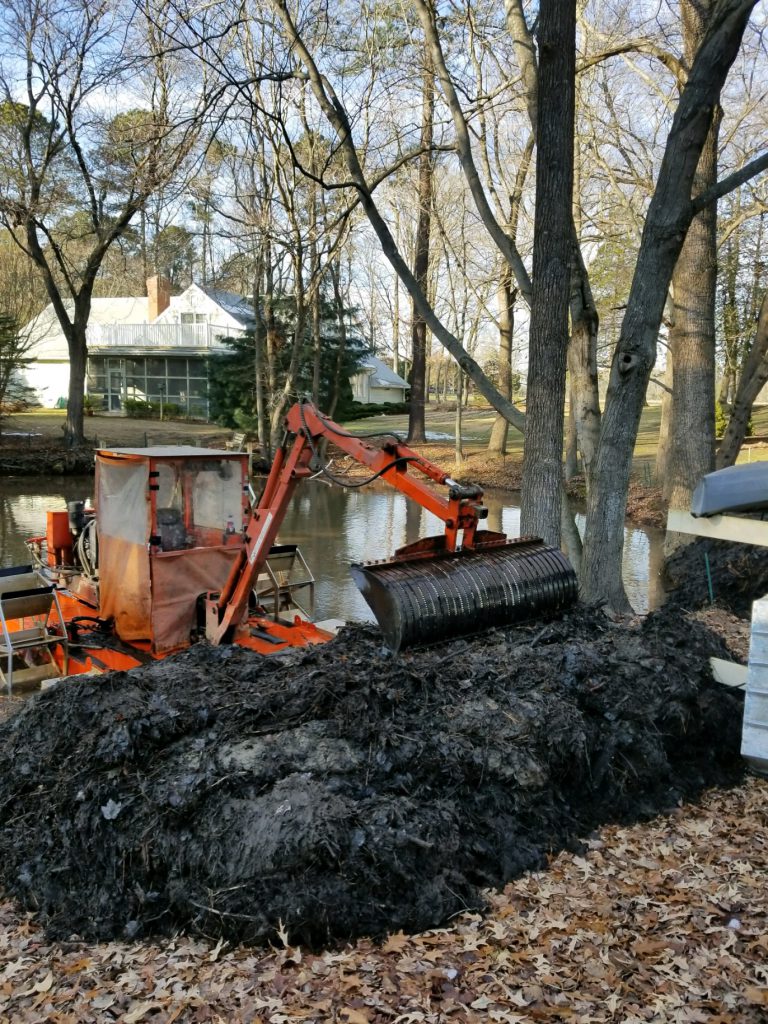

Site Description
Location: Beverly, MA
This college contains two ponds in the center of their campus. The first pond is separated by a student bridge, giving the appearance of two ponds – North and South Pond. North Pond is a one (1) acre waterbody that contains three inlet pipes that flow from the campus’s stormwater system. South Pond is a 0.6-acre waterbody that flows into East Pond by an underground piping system. East Pond is a 0.5-acre waterbody with a concrete bottom, that outflows into Salem Sound to the East. These ponds are the centerpiece of the campus and are highly valued as a recreational space for the student body. There are fountains in each of the ponds, as well as aquatic flora and fauna that are appreciated by the students walking the grounds.
Scope of Work
These three campus ponds had been continually diminishing due to the bioaccumulation of nearby leaf debris and aquatic vegetation. Due to a large amount of detritus, (leaf litter, decaying organic matter, and woody debris) found in a pre-management survey, SOLitude recommended a hydro-rake management program. This program was designed to restore the benthic layer of these ponds to increase water column depth, increase habitat value, improve water quality, and increase the flood retention capabilities of the pond.
The hydro-rake is essentially a floating backhoe powered by two hydraulic paddle wheels. The 12-foot hydraulic arm is equipped with a York rake attachment, which was used to rake the pond bottom and remove aquatic vegetation with an attached root system and detritus (leaf litter, debris, decaying organic matter, and soft sediment).

Project Description
Prior to mechanical operations, a temporary equipment path was installed between the ponds to prevent disturbance to the grounds and tree root systems, tree trunks were wrapped to prevent injury from accidental equipment contact and straw wattles were installed along the equipment path, and material handling points to prevent erosion from the de-watering process. The container service and John Deere tractor were then brought to the site. Once the site set up was complete, the hydro-rake was mobilized into South Pond and operations commenced.
As the hydro-rake removed each rake full of organic matter collected from the water column, the material dewatering process was in motion. The hydro-rake, having no on-board storage, transported each collected rake full of biomass and deposited the material into the tractor’s bucket at the shoreline. Once collected, the material was placed into a container service to continue the dewatering process. Once properly dewatered, the material was brought to a nearby composting facility for proper disposal.
The management program for the three ponds was performed for 43 days between December 2016 and February 2017. In sum, 4,500 cubic yards of material was removed and an average of 4 feet of water depth was recouped within the ponds. Overall, the retention capabilities of these ponds were recouped and the aquatic eco-system was restored.









